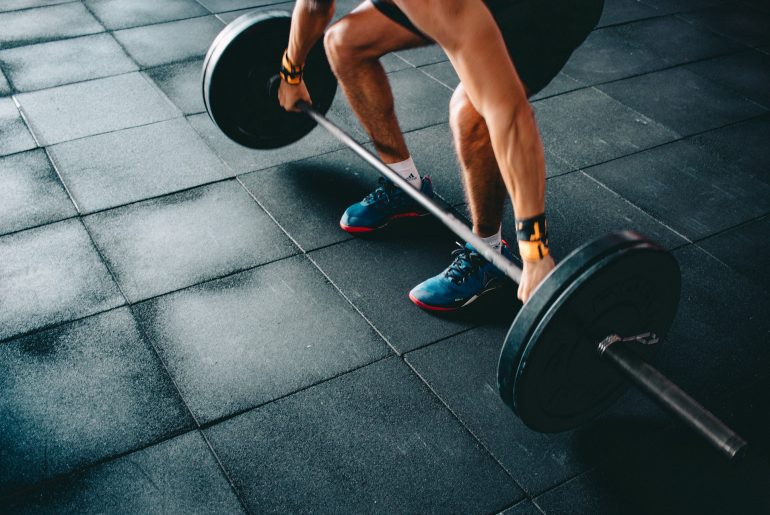Think peak fitness is yours to keep forever? Think again! It’s common for fitness levels to plummet after just a few short weeks of inactivity. No, it’s not your imagination if you swear that you feel and look different after taking a week off from the gym. Your body may have reverted significantly during that brief window. Why is it so easy to become unfit? Blame entropy.
Our bodies need to be in constant motion to maintain fitness levels. If we “slack off” for any amount of time, our bodies are quick to become “deconditioned.” Even people who have been training for years can see significant decreases in fitness if they take just a few weeks off. That doesn’t mean that you should never take a day off from training. However, you should be aware of the role that consistency plays in helping you to enjoy prolonged fitness without the need to start from scratch every time life gets busy. The good news is that knowing why our bodies want to get back to a very unfit base can help us build routines that promote sustained fitness. Take a look at everything you ever wanted to know about why it’s so easy to get unfit!
First, Here’s How We Get Fit
Everything that we put our bodies through helps us to adapt, toughen up and become more tolerant. That’s why an exercise that seems complicated one week may be downright breezy the next. Our bodies are working towards higher and higher fitness levels while we’re consistent with exercise. If we’re adding in healthy meals full of complete nutrition for feeding our muscles with lean proteins, leafy greens and healthy grains, we often see even better results because we have the energy to get through our workouts without battling cravings.
How Does Fitness Fall Apart?
Even fitness that feels like it’s peaking at higher levels can go bust. Pursuing a fit life doesn’t leave any room for resting on your laurels because your body needs to stay in motion to keep that fitness momentum. Just ask science.
A person who builds up strength and fitness over a long period of time can experience reduced fitness in just a few weeks of no training. One study examined the effects of de-conditioning on a female master athlete after an injury. In that study, it took just four weeks of de-training for the participant to experience a significant decrease in fitness, as evidenced by a reduction of VO2max scores of 25.7 percent. VO2 max scores represent the maximum volume of oxygen that your body can use during exercise. This score is frequently used to measure cardiovascular fitness in athletes.
The simple reason is that the body doesn’t have a need to stay fit once the stress of training is lifted. The average person can expect to see their cardiorespiratory fitness return to pre-training levels in just eight weeks. Yes, that means that months or years of hard work will put you right back where you started in terms of the amount of oxygen your body uses during physical activity. We also know that blood, and plasma volumes can dip by as much as 12 percent within four weeks of a person ending their training routine. Those declines are simply due to the reduction in stress being placed on the heart and muscles. When researchers looked at 21 runners who participated in the 2016 Boston Marathon, they found that four weeks of using reduced routines caused cardio fitness levels to drop significantly. However, researchers noted that maintaining a decreased routine helped the runners avoid even larger drops in fitness. Let that be a lesson that something is better than nothing if you’re trying to maintain some level of cardio fitness during a period where things like time restraints or life obstacles are making it difficult to work out at full capacity.
What About Muscle Strength?

According to researchers, athletes will begin to lose muscle strength in just three weeks if they aren’t working out! That means that just a month away from your fitness routine can create a very noticeable difference in muscle strength and appearance. The big deal about losing muscle strength is that muscles are very important for overall health and leanness. Muscles burn more calories than fat, even outside the gym. That’s true even when you’re simply sitting on the couch watching television. As a result, a person with higher muscle mass will typically burn more calories than a person with lower muscle mass throughout the course of an average day. When muscles are allowed to atrophy, this opens the door for sudden weight gain.
Why Don’t Our Bodies Just Stay Fit?
The human body is smart. It’s not in the business of maintaining all kinds of “expensive” muscle just so that you can look good. In truth, our bodies will default to the easiest baseline when we don’t put them through the wringer in training. If it’s just about preserving calories for survival, the body doesn’t “care” about putting energy into cardiovascular performance or lean muscle. The default is to build fat that doesn’t burn off as many calories as lean muscle. This is why keeping muscle on takes so much work. Of course, the catch to this is that it becomes much easier to stay inactive once we are inactive. When we decrease in fitness, we have less energy. All it takes is an excuse like being too busy, not wanting to drive to the gym or saying that we’ll go tomorrow to get even deeper into the cycle of reverse fitness.
How to Maintain Fitness
The best way to stay fit is to never fall off the fitness wagon. Once you understand how easily your body will revert back to your pre-training performance level and appearance, it’s hard to ever want to let yourself slide backward. Here are some tips for how to preserve fitness:
#1 Customize a meal plan that fuels your body based on the workouts you’re doing. You’re more likely to give up on a fitness routine if you feel hungry, deprived or weak. You may also sabotage all of the hard work you’ve done by grabbing for comfort foods at the end of a long day. The best way to combat this is by using meal prep to ensure that a balanced, proportioned and satisfying meal is always waiting at every mealtime of the day.
# 2 Remember that doing something is better than nothing. As researchers point out, athletes were able to avoid considerable dips in fitness by keeping up with some level of training. This created much better outcomes than if they had stopped running “cold turkey.”
#3 Adjust your diet based on your fitness levels. If you’re eating more calories when you’re training hard, don’t forget to adjust your diet for the times when you’re not as active. It’s not necessary to eat like you’re training when you’re not training. When your muscles aren’t burning those extra calories, you may be more likely to put on fat instead. Focus on healthy meals that are the right size based on your daily intake needs.
#4 Create fitness plans that actually work for your life. If you find yourself constantly committing to rigorous workout plans that you abandon after a few weeks, this may be a sign that you’re taking on too much all at once. A better approach may be to design a fitness plan that’s more sustainable for your lifestyle. You may find that doing workouts that you enjoy helps you to avoid the need to constantly “start from scratch” after your fitness levels reset with every lapse.
The bottom line is that it’s not a matter of you against your body. Yes, your body wants to get back to baseline. However, consistency that’s powered with a positive mindset can help you to enjoy long-term fitness.
Don’t Forget to Get Support

One of the reasons why so many people fail to maintain fitness after achieving it is that they don’t have support! It’s very easy to fall into a four-week funk that sets our fitness level back to zero when we don’t have support. To boost your chances of staying consistent, things like a trainer, fitness class or workout buddy should all be considered. If you’re constantly getting off track with eating properly for fitness, consider signing up for a meal prep service that delivers balanced, tasty meals that you select right to your door. In fact, researchers are very clear about the fact that nutrition has the most significant impact on fitness.
For people focused on getting fit, it’s essential to know about the benefits of improving diet and exercise at the same time. In one study designed to measure methods for improving health, researchers found that only participants in the group that received simultaneous nutrition and exercise counseling reached their goals when compared to participants in the nutrition-only and exercise-only groups.
Final Thoughts on Avoiding Fitness Entropy
The only real guard against reverse fitness is consistency! Making it as straightforward as possible to fit the right diet and exercise into your life is as close to a “hack” as anyone can get. Of course, the freedom to look and feel your best is the best inspiration for staying on track!





